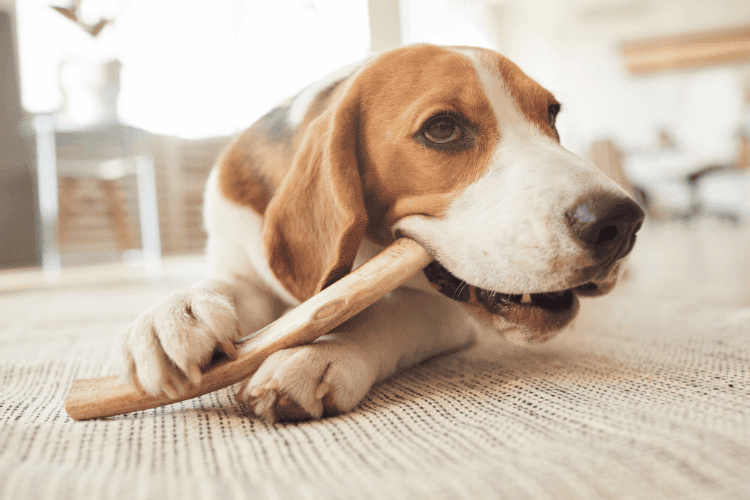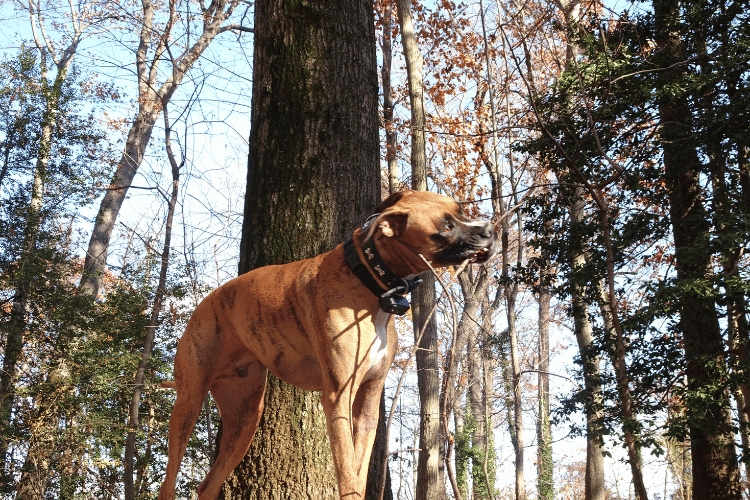Wood chewing in dogs can be both frustrating and potentially hazardous. Additionally, this behavior can result in extensive damage, ranging from chewed furniture to damaged fences, thus posing risks to the dog’s health. To deter this unwanted behavior, it is essential to comprehend the underlying reasons behind wood chewing and implement effective strategies. In the following blog post, we will delve into the common causes of wood chewing in dogs and present practical and proven techniques to prevent and discourage this behavior. By adhering to these strategies, you can establish a safe and harmonious environment for both your dog and your home.
1. Understanding Wood Chewing Behavior
Wood chewing behavior in dogs can be both puzzling and frustrating for pet owners. Moreover, it is crucial to delve deeper into the reasons behind why dogs engage in this behavior to effectively address it. By thoroughly examining the causes, triggers, and potential solutions, we can enhance our comprehension of wood chewing behavior in dogs. Consequently, armed with this knowledge, dog owners will be empowered to implement appropriate interventions and establish a safe and enriching environment for their beloved furry friends.
2. Identifying the Causes of Wood Chewing in Dogs
Wood chewing behavior in dogs can be frustrating and concerning for pet owners. To effectively address this issue, it’s crucial to identify the underlying causes behind their propensity to chew on wood. In this blog post, we will explore the five common causes of wood chewing in dogs. By understanding these causes, you can gain insight into your dog’s behavior and implement appropriate strategies to address and prevent wood chewing habits. Wood chewing in dogs is a common behavior that can have various underlying causes. Some possible reasons for this behavior include:
3. Lack of mental stimulation
Dogs may chew on wood when they are bored or not receiving enough mental stimulation. Providing appropriate toys and engaging in regular exercise and playtime can help redirect this behavior.
4. Anxiety or stress

Dogs may resort to wood chewing as a way to cope with anxiety or stress. Identifying and addressing the underlying cause of the anxiety, such as separation anxiety or environmental changes, can help reduce this behavior.
5. Nutritional deficiencies
In some cases, dogs may chew on wood due to nutritional deficiencies. Ensuring a balanced diet and discussing any concerns with a veterinarian can help address this issue.
6. Dental problems

Dental issues, such as tooth pain or gum disease, can prompt dogs to resort to wood chewing as a means of alleviating discomfort. To maintain good oral health, regular dental check-ups and appropriate dental care are imperative.
In order to tackle wood chewing behavior in dogs, it is crucial to identify the root cause and implement suitable measures accordingly. This can involve offering alternative chew toys, enhancing mental and physical stimulation, addressing anxiety or stress factors, and ensuring proper nutrition and dental care. By incorporating these interventions, we can effectively minimize wood chewing behavior in dogs.
7. Preventing Furniture Chewing in Dogs

Dealing with a dog that chews on furniture can be both frustrating and costly. Nevertheless, by employing the right training techniques, you can effectively deter this behavior and safeguard your furniture against further damage. In the forthcoming blog post, we will furnish you with practical and user-friendly dog training tips to halt furniture chewing. Whether you have a puppy or an adult dog, these strategies will assist in redirecting their chewing instincts towards appropriate items, thus fostering a harmonious living environment.
Root Causes of Furniture Chewing in Dogs
- Teething and exploration phase in puppies
- Boredom and lack of mental stimulation
- Anxiety and stress-related chewing
Setting up Your Dog for Success
- Provide appropriate chew toys and alternatives
- Puppy-proofing and limiting access to furniture
- Environmental enrichment and mental stimulation
Effective Training Techniques
- Supervision and redirection
- Positive reinforcement and rewards
- Use of deterrents and taste aversion methods
- Consistency and patience in training
- Seeking professional help if needed
- Addressing Underlying Behavioral Issues
- Separation anxiety and stress management
- Seeking professional assistance for behavior modification
- Managing the Aftermath
- Cleaning and repairing furniture
- Reinforcing training and monitoring progress
Prevention Techniques to Address Wood Chewing in Dogs

Wood chewing behavior in dogs can pose problems and potential damage. Therefore, it is imperative to employ prevention and training techniques to address this behavior and redirect their chewing instincts towards more suitable items. In the forthcoming blog post, we will delve into effective strategies to prevent and manage wood chewing in dogs. By incorporating these techniques, you can encourage healthier chewing habits and establish a secure environment for your beloved furry companion.
Avoid Chewing in Dogs by Providing Alternatives
- Offering a variety of chew toys and treats
- Ensuring toys are safe and durable
- Rotating toys to keep them interesting and engaging
Environmental Modifications
- Limiting access to wooden objects and furniture
- Using barriers or deterrents to protect wooden surfaces
- Providing designated chewing areas or stations
Positive Reinforcement Training
- Rewarding appropriate chewing behavior
- Using clicker training and verbal cues
- Redirecting chewing to acceptable items
- Consistency and repetition in training sessions
- Environmental Enrichment
- Engaging in regular physical exercise
- Providing mental stimulation through puzzle toys or interactive games
- Incorporating scent-based activities or food-dispensing toys
- Addressing Underlying Issues
- Managing separation anxiety and stress
- Seeking professional help for behavioral issues
- Ensuring proper dental care and addressing any oral discomfort
- Supervision and Management
- Monitoring your dog’s behavior and environment
- Using deterrent sprays or taste aversion products
- Crating or confining your dog during unsupervised periods
Wood chewing in dogs can have both pros and cons

Pros:
- Chewing on wood can help remove plaque and tartar buildup on a dog’s teeth, promoting dental health. The abrasive action of chewing can help keep teeth clean to some extent.
- Chewing on wood can provide mental stimulation and a form of entertainment for dogs. It can help alleviate boredom and provide an outlet for their natural chewing instinct.
Cons:
- Chewing on hard objects like wood can result in dental damage, such as cracked or broken teeth. Additionally, splinters from the wood can pose a risk by getting lodged in the gums or throat, potentially causing injury or obstruction.
- Ingesting wood splinters can lead to digestive issues for dogs, including irritation, blockages, or perforations in the digestive tract, which may necessitate medical intervention.
- Furthermore, certain types of wood can be toxic to dogs. It is crucial to prevent dogs from chewing on unknown or potentially toxic wood, as some wood may be treated with chemicals or pesticides that can be harmful if ingested.
- Moreover, chewing on wood can result in the destruction of property, including furniture, walls, or other household items. Repairing or replacing these damaged items can be both costly and inconvenient.
Wood chewing in dogs can be a challenging behavior to address, but with the right strategies, it can be effectively discouraged. By understanding the underlying causes of wood chewing, providing suitable alternatives, implementing positive reinforcement training, and addressing any underlying issues, pet owners can prevent and manage this behavior. It is important to prioritize the safety and well-being of the dog by avoiding potential dental damage, digestive issues, toxicity, and destruction of property associated with wood chewing. By taking proactive measures and providing appropriate mental and physical stimulation, dog owners can create a harmonious environment where their pets can engage in healthier chewing habits and live a happy and fulfilled life.


